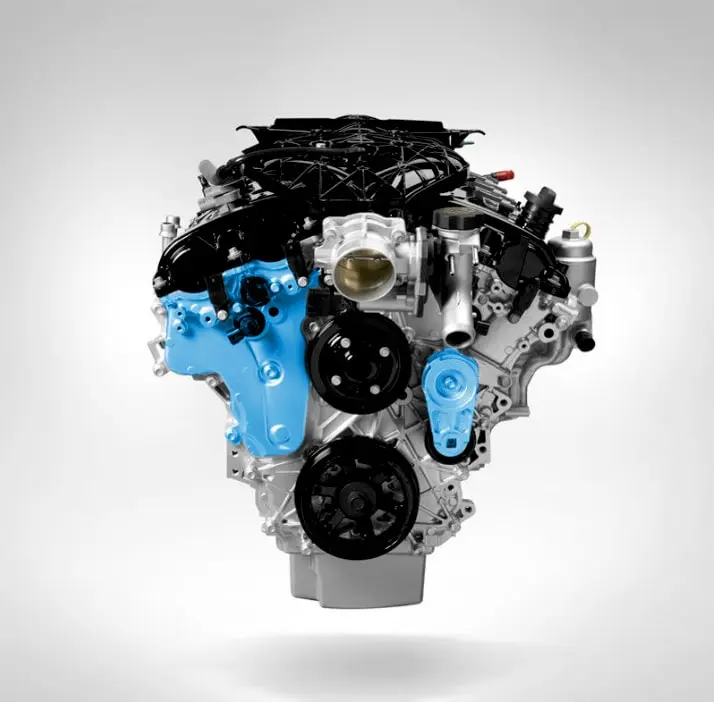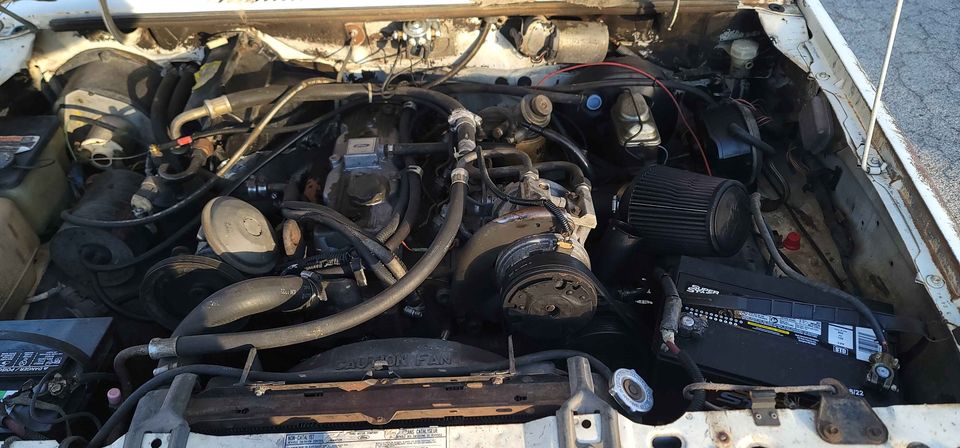How to Maintain and Optimize the 2.2 Ford Ranger Engine for Long-Lasting Performance
How to Maintain and Optimize the 2.2 Ford Ranger Engine for Long-Lasting Performance
Blog Article
Recognizing the Basics of Vehicle Engines: Attributes, types, and functions

Introduction of Vehicle Engines
A car engine functions as the heart of a lorry, converting gas into mechanical energy to propel it ahead. This intricate system consists of various elements that operate in unison to guarantee optimum performance and effectiveness. The essential operation of an automobile engine entails the internal combustion procedure, wherein fuel and air are blended, stired up, and removed to produce power.
The engine's layout can considerably affect its efficiency, gas efficiency, and emissions. Secret parts consist of the cylinder block, pistons, crankshaft, and camshaft, each playing an important duty in the engine's general function. The cylinder block houses the cyndrical tubes where burning takes place, while the pistons convert the explosive energy from burning right into straight activity. This activity is then changed right into rotational power by the crankshaft, making it possible for the vehicle's wheels to turn.
Along with these components, engines commonly make use of different systems such as gas shot, ignition, and cooling systems to enhance performance and long life. Recognizing the standard auto mechanics of cars and truck engines is crucial for executing and detecting concerns upkeep, eventually adding to the vehicle's reliability and efficiency over time.

Kinds of Auto Engines
Auto engines can be classified right into numerous types based on their layout, gas type, and functional concepts. 2.2 ford ranger engine. One of the most usual groups include internal burning engines (ICE), electric engines, and crossbreed engines
Inner combustion engines, which can be more divided right into gas and diesel engines, run by stiring up a fuel-air blend to generate power. Fuel engines are normally lighter and smoother, while diesel engines are extra fuel-efficient and deal greater torque.
Electric engines make use of electric energy saved in batteries to power an electric motor, giving immediate torque and no emissions throughout operation. As modern technology breakthroughs, electric lorries (EVs) are progressively becoming prominent for their environmental benefits and reduced running expenses.
Crossbreed engines combine components of both internal combustion and electrical engines, enabling versatile power sources and boosted fuel effectiveness. They can run in various settings, utilizing either the fuel engine, the electrical motor, or both simultaneously.
Each kind of engine has distinctive advantages and downsides, affecting their application in various car kinds and market sectors, from compact cars and trucks to heavy-duty trucks. Comprehending these types is crucial for making informed decisions relating to lorry choice and performance expectations.
Engine Features Explained
Comprehending engine features is crucial for understanding exactly how automobiles run successfully. At the core of any interior burning engine exists the basic procedure of transforming gas right into power. This process begins with the intake stroke, where air and fuel are drawn into the burning chamber. Following this, the compression stroke presses the air-fuel blend, raising its temperature and pressure.
The ignition takes place next, firing up the blend and creating a fast expansion of gases. This pressure drives the piston down during the power stroke, which ultimately translates right into the rotational activity of the crankshaft. The exhaust stroke after that removes the spent gases from the chamber, giving way for a new cycle to start.
In enhancement to these main functions, engines also incorporate systems that handle air conditioning and lubrication, making sure optimal operational temperature levels and minimizing friction between relocating parts. This elaborate interplay of features allows the engine to produce the power necessary for automobile propulsion while maintaining performance and dependability. Understanding these features supplies valuable understanding into the complexities of auto engineering and boosts the capability to diagnose and resolve engine-related problems effectively.
Trick Engine Functions
Engine design incorporates several vital functions that considerably affect effectiveness, efficiency, and sturdiness. One of the most critical elements is the engine configuration, which consists of inline, V-type, and level layouts. Each configuration affects the engine's balance, power, and dimension result, consequently influencing total automobile dynamics.
One more essential function is the engine displacement, describing the total quantity of all cylinders. Larger variations typically generate even more power yet may compromise fuel effectiveness. Engine products additionally play a pivotal duty; high-strength and lightweight materials, such as aluminum and magnesium alloys, enhance performance without adding extreme weight.
The sort of gas shot system used-- such as multi-port or straight shot-- influences burning efficiency and emissions. Turbo charging and turbocharging are functions that improve engine efficiency forcibly extra air into the combustion chamber, boosting power result without significantly increasing engine size.
Lastly, the presence of innovative engine monitoring systems maximizes fuel-air mix and ignition timing, adding to smoother operation and better gas economy. Jointly, these attributes specify an engine's capabilities, setting the foundation for its performance and long life in a competitive automotive landscape.
Upkeep Tips for Engines
Correct engine upkeep is critical for making certain optimum performance and longevity, as disregarding regular care can result in significant issues down the line. To keep your engine successfully, start with normal oil modifications, generally every 3,000 to 7,500 miles, depending on the sort of oil made use of. Fresh oil lubricates engine parts, minimizing friction and wear.
In addition, keeping an eye on coolant levels is essential to protect against visit our website getting too hot. Make sure that the coolant is topped up and remains in good condition to maintain effective temperature law. Consistently change and inspect air and fuel filters, as clogged filters can impede airflow and fuel distribution, compromising useful content engine performance.
Furthermore, pay interest to ignition system and ignition systems. Worn or malfunctioning ignition system can result in misfiring and lowered performance. Checking the battery terminals and connections for deterioration is also necessary, as a weak battery can affect engine starting.

Conclusion
In summary, an extensive understanding of automobile engines includes different kinds, functions, and key features that considerably influence car performance. Internal combustion engines, along with hybrid and electric options, demonstrate diverse mechanisms for energy conversion. 2.2 ford ranger engine. Identifying the essential features, such as consumption and exhaust cycles, together with important engine attributes like setup and gas injection systems, gears go to this web-site up vehicle owners with the expertise essential for reliable maintenance and operation, inevitably improving car longevity and efficiency
A car engine offers as the heart of an automobile, converting gas right into mechanical power to push it forward. The fundamental procedure of an automobile engine involves the interior combustion procedure, where fuel and air are combined, fired up, and expelled to develop power.
Consistently replace and evaluate air and fuel filters, as clogged filters can impede airflow and gas delivery, endangering engine efficiency. - 2.2 ford ranger engine
In recap, a thorough understanding of cars and truck engines encompasses numerous types, features, and key functions that significantly affect vehicle performance. Identifying the essential features, such as intake and exhaust cycles, together with critical engine functions like configuration and fuel shot systems, equips car owners with the understanding necessary for efficient upkeep and procedure, eventually boosting automobile durability and performance.
Report this page